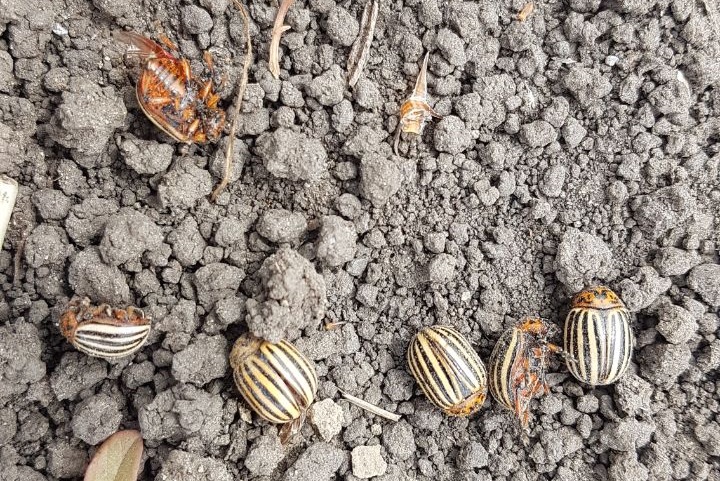The first potato sprouts attracted hordes of the Colorado potato beetle. This year the number is much higher than in previous years. Summer residents attribute this to the warm winter, which created comfortable conditions for insects. Now the main thing is to save the potatoes.
The first potato sprouts attracted hordes of the Colorado potato beetle. This year the number is much higher than in previous years. Summer residents attribute this to the warm winter, which created comfortable conditions for insects. Now the main thing is to save the potatoes.
Colorado beetles are common in almost all regions of Russia. They are not afraid of frost or heat. In winter, they burrow half a meter into the soil and easily endure severe frosts.
Flying over long distances, these insects are guided by the smell of nightshade crops, including tomatoes. However, they give the greatest preference to potatoes.
The beetles themselves will not cause much harm to plantings, but their larvae, especially those already grown, can gnaw a bush to one stem, says Rosselkhoznadzor.
Measures to combat the Colorado potato beetle have long become common for owners of potato plantations. Many simply collect beetles and then their larvae. But this is very labor intensive and inefficient. Collect daily in the summer. There are also annoying mistakes: summer residents simply drop beetles into a jar of water without closing the lid. So water for beetles is not fatal. These insects do not drown and can get out of the jar.
Remember! Collect beetles and larvae in a tightly closed container.
Experienced summer residents prefer to process potatoes before planting. Now there are many effective drugs that protect potatoes from Colorado potato beetles and wireworms.
Processed potatoes are immediately visible: up to a dozen dead insects usually lie around an ascended bush. However, it is worth remembering that the effectiveness of the drug decreases over time. Within a month, the concentration of substances poisonous to insects in potato leaves decreases, which makes the potato vulnerable to beetles and their larvae.
Given that the beetles are odor oriented, crops with a strong odor can be sown around the potato field: garlic, beans or beans.
Also now on sale there are a lot of preparations for processing already sprouted potato greens. You can process several times over the summer, but remember one thing: the last grass should be done no later than a month before harvesting. By this time, toxic substances completely disintegrate in root crops.
Many gardeners hesitate to use chemicals, fearing for their health. In this case, you can treat the bushes with infusions or decoctions of celandine, bitter wormwood, horsetail or dandelion.
Usually, after the flowering of potatoes, summer residents stop collecting beetles or processing plantings from their larvae, believing that the roots are already formed and the presence of a large green mass will not affect their growth. If so, allowing the development of larvae into full-fledged beetles is a big mistake. They will again descend into the ground for the winter, and will have to fight them next year. Unfortunately, in most gardens, it is simply not possible to observe crop rotation and sow, for example, carrots in place of potatoes.
